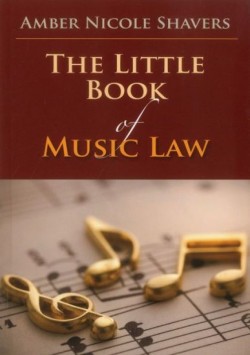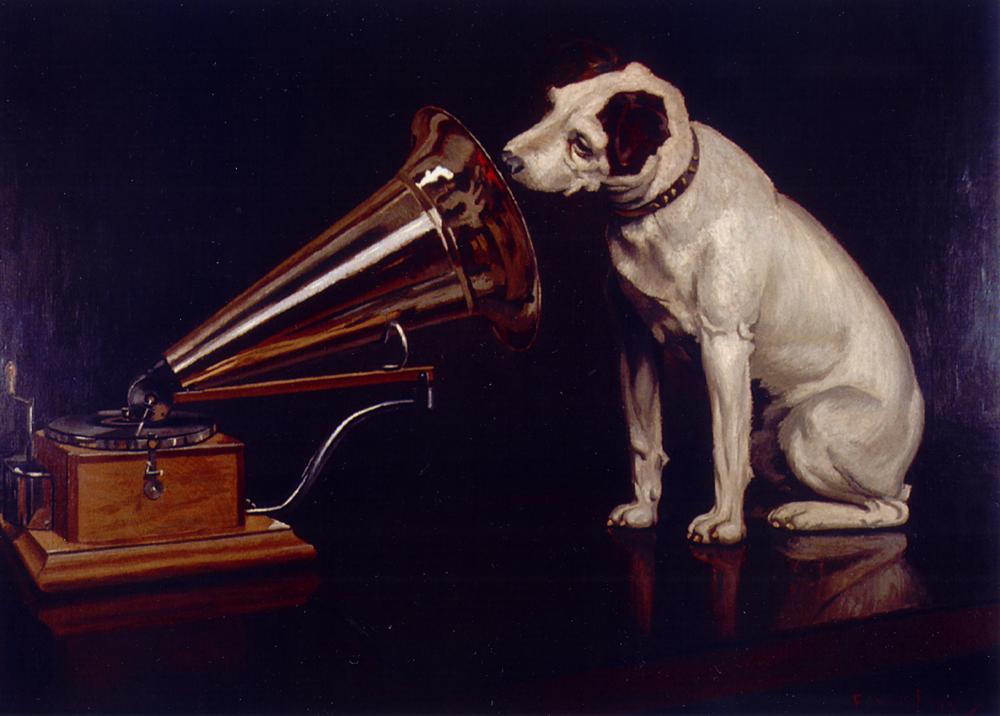If music be the food of law, plead on…
The Little Book of Music Law, by Amber Nicole Shavers. Reviewed by Paul Magrath. As demonstrated by the recent litigation over claims that one of the most famous rock anthems of all time, Led Zeppelin’s “Stairway to Heaven”, was partly filched from another song, the opportunities for legal disputes in the world of music… Continue reading
The Little Book of Music Law, by Amber Nicole Shavers. Reviewed by Paul Magrath.
 As demonstrated by the recent litigation over claims that one of the most famous rock anthems of all time, Led Zeppelin’s “Stairway to Heaven”, was partly filched from another song, the opportunities for legal disputes in the world of music are many and varied.
As demonstrated by the recent litigation over claims that one of the most famous rock anthems of all time, Led Zeppelin’s “Stairway to Heaven”, was partly filched from another song, the opportunities for legal disputes in the world of music are many and varied.
In that case it was also somewhat spooky that the claim was being made from beyond the grave, by a member of the band called Spirit. The posthumous claim was recently thrown out by a jury in Los Angeles (CNN: Led Zeppelin did not copy ‘Stairway to Heaven’ intro, jury finds). But the estate of guitarist Randy California was not unusual in having pursued a claim for breach of musical rights many years, even decades, after the date of accrual of the asserted rights.
Another recent case involved the rights in the ubiquitously performed tune, “Happy Birthday”, which many thought was simply traditional, but which Warner/Chappell asserted was copyrighted in 1935. Following settlement of a lawsuit commenced by filmmaker Jennifer Nelson in 2013, the publishers will no longer be allowed to collect licensing royalties on those who sing “Happy Birthday” in public and will pay back $14 million to those who have paid for licensing in the past. (Ars Technica: “Happy Birthday” is public domain, former owner Warner/Chapell to pay $14M).
The most bizarre thing about this case was probably the fact that Warner/Chappell had been collecting something like $2m a year in royalties from the use of the song – not in millions of homes and restaurants when the candles on the cake are lit (that would be somewhat oppressive and mighty hard to enforce) but whenever the song was used in creative works like movies and television shows. Even so, it did seem rather ridiculous, like a fairy tale law requiring a slice of every birthday cake in the land to be removed to the royal palace for the gargantuan king’s delectation before an audience of flatterers and fools.
Although The Little Book of Music Law predates both these recent cases, Amber Nicole Shavers has collected in it some of the most interesting and notorious cases of this type to provide an entertaining introduction for students and practitioners unfamiliar with this area of law.
Claims for breach of copyright involving allegations of plagiarism are, as the Stairway to Heaven claim demonstrated, easy enough to make but sometimes hard to prove. One of the issues in the case concerned whether members of Led Zeppelin, who had once shared a stage with the band Spirit some years before composition of “Stairway”, would have been familiar with Spirit’s track “Taurus” on which it was said to be partly based. As Shavers explains in a chapter entitled “A Beatle, A Girl Group, and ‘Subconscious’ Copyright Infringement”,
If the work at issue is found to be similar enough to the copyright holder’s original work, but it can be demonstrated that the alleged infringer never had any access to the original work, then the infringement claim will likely fail. However, if it can be demonstrated that the alleged infringer had access to the copyrighted work, the court then applies a second test, commonly known as the ‘substantial similarity’ or ‘striking similarity’ test.”
That chapter concerned a claim that the song “My Sweet Lord” recorded by Beatles guitarist George Harrison in 1970 had been copied from a No 1 hit song called “He’s So Fine” performed by the girl group of the title, The Chiffons, in 1962. The Chiffons had been one of the opening acts for the Beatles’ first US concert, in 1964. The case was complicated by the involvement of the Beatles’ former manager Allen Klein, both in pretrial negotiations to buy out the disputed rights and (as a surprise party) in the litigation and its aftermath, but the copyright claim itself revolved around Harrison’s likely exposure to the Chiffons’ earlier work. On this, the court found that he did indeed have access to “He’s So Fine”, and that two motifs in his work were very similar to it. However, the judge ruled that his imitation had been “subconscious”, and that the earlier work had simply formed part of a “wellspring” of inspiration upon which he had drawn when choosing the notes and chords of his song.
Given that so many British and American bands were working within a well established blues tradition, it is hardly surprising that so many of the ideas in their songs all seemed to come from the same pattern book or wellspring. This was one of the arguments in the “Stairway to Heaven” case, which, had it gone the other way (an appeal is said to be in the offing) could well have turned out to depend on a similar “subconscious” copying as Harrison’s.
The “My Sweet Lord” claim, though involving a British defendant, was fought out in the American courts, as were most of the other cases in this book, which is not surprising given that it is published by an imprint of the American Bar Association. I was given my copy by a charming lady at their stand at the annual conference of the American Association of Law Libraries last year.
The cases, which are arranged in a loosely chronological order, are by no means confined to the infringement of rights in music. One of the early chapters concerns the patent in the Gramophone, described as “an early form of record player”, though it has subsequently become a generic term (interchangeable with its rival the Phonograph). To be more precise, the case Leeds & Catlin Co v Victor Talking Machine Co (1909) 213 US 301 was, Shavers says,
the first case in which the Supreme Court upheld a lower court’s application of the concept of contributory infringement of a nonstaple item in a patent dispute. Contributory patent infringement is a form of indirect patent infringement that involves the sale of an unpatented item for use in a patented machine. A nonstaple item is a product whose primary use is with a patented product and generally cannot be used outside of the patented product. In this case the patented product was the record player, and the nonstaple item was the ‘record’. The court agreed that the combination of the record player and the record, when engaged with one another, qualified for protection against infringement.”
This seems now bizarre to us. Though it might make sense in relation to specially designed replaceable refuse sacks for vacuum cleaners, or even the stylus needles designed to be fitted in the playing arm of the record player, the idea that a recording medium (disk, tape, film, CD, etc) can only be used with the device patented for its use would completely stifle the audio-visual industry today. But in 1909 when the technology was at a comparatively early stage of development, it presumably made better sense. As Shavers writes,
The period was a Wild West of patent infringement litigation as competing companies sought to preserve their patents and force others out of the industry entirely.”
Other cases involving music technology range from the piano roll (chapter 2) to the digital sample, in chapter 14. The latter, entitled “A Bittersweet Symphony: a Bitter Side of Sampling”, concerns the use in the Verve’s most famous song of a sampled segment of an orchestral version of a Rolling Stones’ song called “The Last Time”. Shavers explains how, following a protracted legal tussle with the Stones’ former manager, Allen Klein (yes him again), the Verve ended up losing 100% of the publishing rights in their own song. (If there’s a moral to this book, to be derived from several of the cases discussed, it would be “never, ever, get involved in a legal dispute with Allen Klein”.)
Another topic discussed in the book is the meaning and effect of song lyrics, with one chapter explaining to the true meaning of the World War II calypso hit “Rum and Coca-Cola” (a euphemism for white GIs going with local women in Trinidad) and another discussing the Reagan-era music censorship movement and the birth of the “parental advisory” label for music lyrics thought to be likely to lead the teenage mind astray (or teach it rude words: oh for the comfort of a calypso euphemism!).
Shavers wraps each case in an engaging wrapper of anecdote before explaining, clearly and concisely, the legal issues involved. Although the law discussed is almost exclusively US law, the similarities with issues arising under the law of other jurisdictions are sufficiently great to make it a worthwhile read for anyone not already an expert in the field. But in any event, it is an entertaining tribute both to the creative spirit behind music and to the folly, greed and vanity that so often accompany it.

(Image (in public domain) via Wikemedia Commons: artist Francis Barraud (1856-1924) painted his brother’s dog Nipper listening to the horn of an early phonograph during the winter of 1898. Victor Talking Machine Company began using the symbol in 1900.)
This post was written by Paul Magrath, Head of Product Development and Online Content at ICLR, who also tweets as @maggotlaw. It does not necessarily represent the opinions of ICLR as an organisation. Comments welcome on Twitter @TheICLR.
Sign up now for weekly email alerts from this blog. Just put your email address into the box on the left.